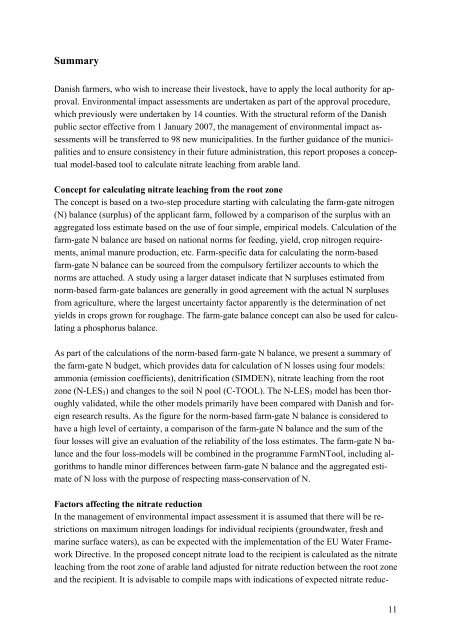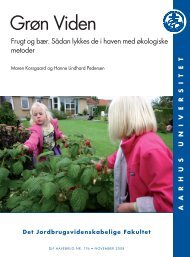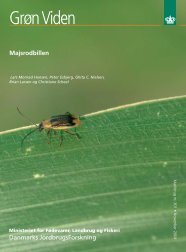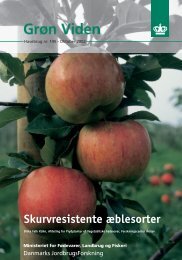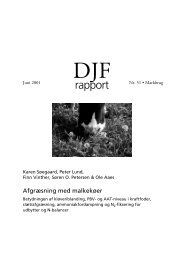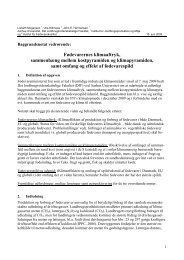VVM - N-tab fra rodzonen
VVM - N-tab fra rodzonen
VVM - N-tab fra rodzonen
Create successful ePaper yourself
Turn your PDF publications into a flip-book with our unique Google optimized e-Paper software.
Summary<br />
Danish farmers, who wish to increase their livestock, have to apply the local authority for approval.<br />
Environmental impact assessments are undertaken as part of the approval procedure,<br />
which previously were undertaken by 14 counties. With the structural reform of the Danish<br />
public sector effective from 1 January 2007, the management of environmental impact assessments<br />
will be transferred to 98 new municipalities. In the further guidance of the municipalities<br />
and to ensure consistency in their future administration, this report proposes a conceptual<br />
model-based tool to calculate nitrate leaching from arable land.<br />
Concept for calculating nitrate leaching from the root zone<br />
The concept is based on a two-step procedure starting with calculating the farm-gate nitrogen<br />
(N) balance (surplus) of the applicant farm, followed by a comparison of the surplus with an<br />
aggregated loss estimate based on the use of four simple, empirical models. Calculation of the<br />
farm-gate N balance are based on national norms for feeding, yield, crop nitrogen requirements,<br />
animal manure production, etc. Farm-specific data for calculating the norm-based<br />
farm-gate N balance can be sourced from the compulsory fertilizer accounts to which the<br />
norms are attached. A study using a larger dataset indicate that N surpluses estimated from<br />
norm-based farm-gate balances are generally in good agreement with the actual N surpluses<br />
from agriculture, where the largest uncertainty factor apparently is the determination of net<br />
yields in crops grown for roughage. The farm-gate balance concept can also be used for calculating<br />
a phosphorus balance.<br />
As part of the calculations of the norm-based farm-gate N balance, we present a summary of<br />
the farm-gate N budget, which provides data for calculation of N losses using four models:<br />
ammonia (emission coefficients), denitrification (SIMDEN), nitrate leaching from the root<br />
zone (N-LES3) and changes to the soil N pool (C-TOOL). The N-LES3 model has been thoroughly<br />
validated, while the other models primarily have been compared with Danish and foreign<br />
research results. As the figure for the norm-based farm-gate N balance is considered to<br />
have a high level of certainty, a comparison of the farm-gate N balance and the sum of the<br />
four losses will give an evaluation of the reliability of the loss estimates. The farm-gate N balance<br />
and the four loss-models will be combined in the programme FarmNTool, including algorithms<br />
to handle minor differences between farm-gate N balance and the aggregated estimate<br />
of N loss with the purpose of respecting mass-conservation of N.<br />
Factors affecting the nitrate reduction<br />
In the management of environmental impact assessment it is assumed that there will be restrictions<br />
on maximum nitrogen loadings for individual recipients (groundwater, fresh and<br />
marine surface waters), as can be expected with the implementation of the EU Water Framework<br />
Directive. In the proposed concept nitrate load to the recipient is calculated as the nitrate<br />
leaching from the root zone of arable land adjusted for nitrate reduction between the root zone<br />
and the recipient. It is advisable to compile maps with indications of expected nitrate reduc-<br />
11


